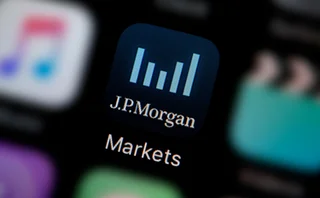
Implied volatility surge sees the return of institutional hedging
Short-term implied option volatility has shot up during the past month due to falling equity markets, which has led to increased institutional hedging, according to a report published this week by Goldman Sachs.
Equity index implied volatility levels last month for the FTSE, DAX and S&P 500 were around double the monthly average of the last eight years, and were only around 50 basis points below the levels seen at the end of August last year. The FTSE and DAX saw average implied volatility reach 24% and 31% for June, while the S&P 500 implied volatility stood at 23%. This compares with 17.75%, 18.5% and 14% for June last year, repectively.
“Implied volatility reached four-year lows during March this year. But now short-term volatilities are hitting four-year highs,” said Larry Chen, an equity derivatives analyst at UBS Warburg in London.
The main driver of the increase in the European index volatility was the depression in the equity markets following corporate governance scandals in the US.
“Following September 11 equity index prices rose until March,” said Chen. “Then everything went down - when the cash markets drop,; implied volatility rises.”
Over the last three months, the big European insurance companies and pension funds have increased their use of options to hedge their exposure to equity markets. These institutions have focused on buying puts and executing collar strategies, according to Goldman.
Industry regulators have attempted to reduce the pressure on pension funds and insurance companies by relaxing the rules on portfolio solvency levels. Countries such as the UK and Denmark normally require insurers and pension funds to reduce risk and strengthen capitalisation when certain trigger levels are reached. But a UK ruling passed at the end of June temporarily relaxed the solvency requirements for institutions, enabling them to hold their equity positions for longer.
Despite these measures, implied volatility has continued to rise, said Goldman, with analysts worried that a further equities sell-off could spark further downward pressure on stocks, causing a further increase in volatility.
But some larger institutions are also considering more adventurous strategies by selling equities while simultaneously buying calls in the expectation of a future rise in equity markets. Such strategies would not be immediately observable due to the size of the institutional portfolios and the necessity to get approval from investors, though it could have an effect in the future, said Altaf Kassam, derivatives and trading research analyst at Goldman Sachs, and one of the authors of the report.
Only users who have a paid subscription or are part of a corporate subscription are able to print or copy content.
To access these options, along with all other subscription benefits, please contact info@risk.net or view our subscription options here: http://subscriptions.risk.net/subscribe
You are currently unable to print this content. Please contact info@risk.net to find out more.
You are currently unable to copy this content. Please contact info@risk.net to find out more.
Copyright Infopro Digital Limited. All rights reserved.
You may share this content using our article tools. Printing this content is for the sole use of the Authorised User (named subscriber), as outlined in our terms and conditions - https://www.infopro-insight.com/terms-conditions/insight-subscriptions/
If you would like to purchase additional rights please email info@risk.net
Copyright Infopro Digital Limited. All rights reserved.
You may share this content using our article tools. Copying this content is for the sole use of the Authorised User (named subscriber), as outlined in our terms and conditions - https://www.infopro-insight.com/terms-conditions/insight-subscriptions/
If you would like to purchase additional rights please email info@risk.net
More on Markets
Buy side would welcome more guidance on managing margin calls
FSB report calls for regulators to review existing standards for non-bank liquidity management
Citi halves swaptions book with US retail funds
Counterparty Radar: Mutual funds and ETFs cut exposures by 22% in Q4
Who’s winning the €STR futures race? Depends how you measure
CME, Eurex and Ice all claim to be leading, but experts say it’s too early to pick a winner
CDS review seeks to tackle conflicts ‘elephant’
Isda AGM: Linklaters proposes overhaul for determinations committee - including independent members
Saudi Arabia poised to become clean netting jurisdiction
Isda AGM: Netting regulation awaiting final approvals from regulators
Buy side looks to fill talent gap in yen rates trading
Isda AGM: Japan rate rises spark demand for traders; dealers say inexperience could trigger volatility
JP Morgan’s new way to trade FX overlays
Hybrid execution method allows clients to put dealers in competition via a single trading agreement
Pension funds eye 30-year Bunds as swap spread tightens
Long-dated bonds continue to cheapen versus euro swaps, and some think they might fall further







